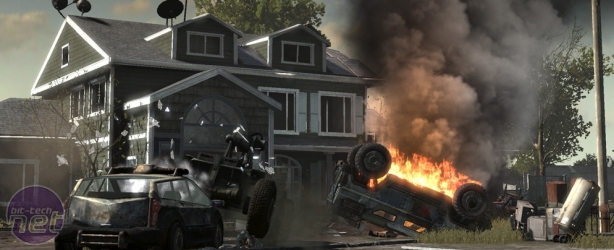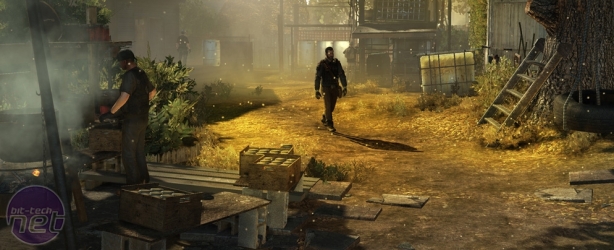
Homefront Preview
Publisher: THQPlatform: PC, Xbox 360, PlayStation 3
Release Date: Q1 2011
GamesCom 2010: To be honest, we didn't go into THQ's Homefront presentation with much in the way of expectations. Everything we'd heard about the game hinted that it was just a Modern Warfare clone – which didn't interest overly as, really, MW2 isn't all that unique. All that phrase means is 'semi-tactical military shooter'.
When we actually got to see the game though, it was an entirely different story. It's hands-down been the most impressive title we've seen so far.
The thing that struck us about the game first was that it seemed a lot closer to World in Conflict than Modern Warfare 2, at least as far as the plotwork goes. Set in the year 2027, Homefront takes place in an occupied United States, with a Unified Korea, backed up by an allied Japan, cast as the villainous invader. There are some similarities to Modern Warfare 2 there, but where the invasion in MW2 was just an event in a more rambling storyline, for Homefront it's the main spectacle; the focus of the entire game.
In terms of gameplay however, the comparisons to World in Conflict go right out the window – Homefront is a straight up shooter, taking leaves out of Half-Life's book and preferring small, scripted events to larger, more open gameplay.
The emphais on a tighter, more linear experience is summed up by what Homefront producer Frank De Lise calls 'the drama engine', which alters individual moments to heighten the overall effect – like making sure that downed helicopters will skid to the floor right in front of you, for example.
The action further distances itself from the likes of Call of Duty when you look at the tools put at the players disposal too – the freedom fighters you join up with in the game are based out of the Colorado suburbs and using whatever weapons they can find to fight back. There are no UAVs or heat-seeking missiles for the most part; what technology there is is taken more from the current day too, despite the future setting. America's economic collapse plays as large a part in defining the weaponry as it does the characters.
That's not to say you don't get to play with some cool technology in the later stages though. Homefront's story has your ragtag group of rebels trying to transport jet fuel from Colorado to San Francisco for an American counterattack, so as you get closer to the remnants of the military you naturally lay your hands on some of their gear. One of the more advanced weapons we saw was a Goliath tank-drone, which sits sedately in the midst of the battlefield firing at any target you select. It's cumbersome and slow, but watching it storm through to the center of a napalm-covered parking lot was one of GamesCom's early highlights for us.
It's the range of locations which really heighten the drama in our opinion though, not the hastily assembled arsenal – Homefront literally has players carving a path across a devastated United States, fighting in supermarkets, back gardens and standard city streets. There's a stunning level of detail built into the environments, which is easily noticed in the stages of the game where you aren't shooting the crap out of everything you see. We particularly liked one of the opening levels, where the player can explore a rebel base at their leisure, learning about how the army keeps itself going and stays off the Korean radar.
Homefront is clearly a game inspired by other titles and, looked at objectively, might not bring many new ideas to the table. Innovation isn't the be-all and end-all though and, from what we've seen, what Homefront might be lacking in creativity, it looks set to make up for in polish and wow-factor.
Homefront is being developed by Kaos Studios and Digital Reality. It will be released early 2011 and will be pusblished by THQ on PC, PS3 and Xbox 360.

MSI MPG Velox 100R Chassis Review
October 14 2021 | 15:04











Want to comment? Please log in.